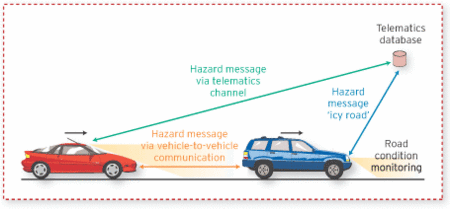| Self-driving cars | 2004-11-19 18:00 3 comments |
 by Flemming Funch by Flemming FunchEETimes: It's shortly before dawn, and the handful of early-morning commuters on the fog-shrouded suburban highway don't see the deer meandering across the road. Luckily, though, their cars see the animal. In an instant, the closest vehicle quickly applies its brakes and turns its wheels, steering around an otherwise imminent collision. It then sends warning messages to oncoming traffic, as well as to the vehicles behind it, which dutifully apply their brakes and slow to a near-crawl as the deer passes. Two to three decades? That's what they said too when I was a kid, you know, more than three decades ago. The biggest problem seems to be that we still don't know how to make good AI. And then there's a matter of having good enough sensors. |